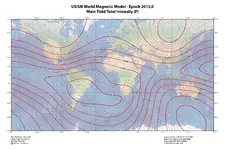Thank you Ropefish. Impecable your information as always. I completed the readings and videos of all your material and learnt a lot in the process. For what I see here and judging other responses, no one seems to know exactly what was the number (tons) of iron on an historical vessel. A calculation of sorts can be deducted though by adding the weight of cannons and anchors, and then guessing what all the rest of the paraphernalia could weight. I will defer here to the wisdom of Salvor6 who wrote to me saying that as a general rule, a 500 ton Spanish galleon was carrying 100 ton if all its cannon were iron, and about 50 tons if they were bronze. This seems to make sense as I add all the rest of the information I was able to gather in this forum and others.
In terms of designing a magnetometer survey model, our own assumptions are that 50% of the iron material could still be in relatively small area (the main wreck site: 300' by 200'). Worst case scenario (or best depending on your point of view) the shipwreck carried all bronze cannons, which means 50 tons of iron, which means that 50% of that, or 25 tons of iron, could be spread around the main wreck site. This could help others with the calculations as to how wide their marine survey lines should be, or if drone or aerial (fix wing of helicopter) are a viable alternative for any given site.
Thanks to everybody for helping with this matter.




